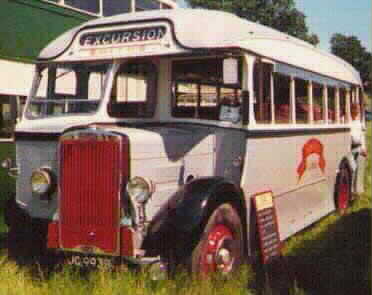 October 1997
October 1997October 1 1997
 The American Civil Liberties Union (ACLU) sent thanks this week to Bradford's 1 IN 12 CLUB, after their success in defeating a proposal for a public CCTV system in Oakland, California, USA.
The American Civil Liberties Union (ACLU) sent thanks this week to Bradford's 1 IN 12 CLUB, after their success in defeating a proposal for a public CCTV system in Oakland, California, USA.
On September 16 the Oakland City Council Public Safety Committee voted three to one to kill a proposed high tech video surveillance pilot project.
John Crew of the ACLU said: "This decision strikes a blow against Big Brother. We were always confident that, if the issue was fully and fairly explored, high tech video surveillance would be rejected. At first, people simply assumed that video surveillance would reduce crime and that there was no right to privacy in public places. Once they considered this issue more closely, however, they found otherwise."
And he told members of the 1 in 12 Club, who are campaigning against CCTV schemes in the Bradford district:
"We could not have done this without your help. Thank you again."
The Oakland Police Department had first proposed the video surveillance plan in September 1996. At an April 1997 demonstration for the Council Committee, the Department showed off chillingly powerful video cameras that swivel every direction and can zoom in to read the fine print on a flyer from hundreds of yards away or can recognise a license plate or face from more than a mile away.
But then the ACLU came across details of the Bradford campaign on the 1 in 12 Clubs World Wide Web site on the Internet.
Tony Grogan of the 1 in 12 Club said:
"They told us that a number of British companies were trying hard to push CCTV systems in America, after making a fortune over here. We've done a lot of research on this subject and were able to provide the ACLU with a good deal of information."
After submissions by the ACLU, the Oakland Police withdrew support for the cameras. The Police report to Oakland Council stated that the Oakland Police Department had hoped to be "... among the pioneers in the field of taped video camera surveillance" but ultimately found that "... there is no conclusive way to establish that the presence of video surveillance cameras resulted in the prevention or reduction of crime."
ACLU attorney John Crew said, "We hope this is a lesson to other communities. Big Brother is often less effective, more expensive and much more intrusive than he may appear to be a first glance."
Tony Grogan said, "Clearly the Americans take issues of privacy and civil liberties seriously and it is notable how the Oakland Council took evidence and instigated a debate before installing the cameras. In Bradford it's the other way around. The Council still has no policy on CCTV and we can't even get them to undertake a proper evaluation of the cameras already in place."
[ Associated feature: CCTV - Big Brother in Bradford ]
October 14, 1997
 Crime throughout West Yorkshire plummeted in the week following the death of Princess Diana, according to West Yorkshire Chief Constable Keith Hallawell .
Crime throughout West Yorkshire plummeted in the week following the death of Princess Diana, according to West Yorkshire Chief Constable Keith Hallawell .
Speaking days before taking up his new post as "Drugs Tsar", he told members of the county's Police Authority that between the death of the princess and her funeral there had been a dramatic reduction in the county's crime levels and a noticeable decrease in the calls upon the police service and incidents of public disorder.
Meanwhile, figures published in the West Yorkshire Police annual report show that the county has the fourth worst crime figures in the country, behind Manchester, the West Midlands and the Met.
Within West Yorkshire, Keighley remains the safest division, with 89 recorded crimes per 1000 people and only 4 violent crimes per 1000 people. However, the overall clear-up rate, at 24%, is amongst the lowest in the county, despite the extensive use of town centre CCTV.
The most dangerous division is Millgarth, which covers Leeds city centre. Here there are 821 crimes per 1000 people and 52 violent crimes per 1000 people. The clear-up rate for violent crimes is the lowest in the county.
The figures show a continuing slight fall in overall crime rates since 1993. However, only one third of reported incidents to the police end up as recorded crimes.
See the official crime figures.
October 24, 1997
 "Transperience" - Bradford's transport museum, which took 12 years and nearly £12 million of public money to develop, has closed its doors this month with debts of £1 million, only 2 years after it opened.
"Transperience" - Bradford's transport museum, which took 12 years and nearly £12 million of public money to develop, has closed its doors this month with debts of £1 million, only 2 years after it opened.
The financial disaster was predicted as long ago as 1987 by consultants Touche Ross, whose feasibility study into the project concluded: "Cash at the turnstiles would not be enough to fund a West Yorkshire Transport Museum scheme".
These sentiments were echoed by West Yorkshire Transport Trust member Councillor Stanley King earlier this year when he said: "I have always had my doubts the income could support these overheads".
It's a pity Cllr. King did not express his doubts 10 years ago before nearly £12 million was wasted on a scheme that many saw as destined to fail.
October 24, 1997
![[The Usual suspects]](usual.jpg) People are selected and targeted by "Spy-cameras" according to the prejudices of the CCTV operators, a damning new study by one of the regions top Criminologists shows.
People are selected and targeted by "Spy-cameras" according to the prejudices of the CCTV operators, a damning new study by one of the regions top Criminologists shows.
"The young, the male and the black were systematically and disproportionately targeted, not because of their involvement in crime or disorder, but for 'no obvious reason'", says the study. Also targeted were young people described as "scrotes", the homeless, and "anyone who directly challenged... the right of the cameras to monitor them..."
1 in 10 women were targeted for entirely "voyeuristic" reasons by the male operators, according to the researchers.
Back to Contents Page